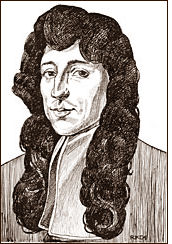


In the mid-17th century, an anxious young man wrote in his journal, “I pray, thee, O God, take this plague from me and free my soul of all distraction, to work on one thing alone, and to make myself familiar with the tables of medicine alone.” Luckily for generations of biologists, geologists, and paleontologists, the prayer went unanswered, and the young man continued chasing his wandering interests. The author of the prayer was Niels Stensen, also known by his latinized name of Nicolaus Steno. After making unprecedented discoveries in anatomy, he changed course and established some of the most important principles of modern geology. Steno lived at a time when people believed that fossils grew inside rocks, lowly animals emerged spontaneously from decaying matter, motions of stars decided fortunes and personalities, witches skulked everywhere, and crystals and unicorn horns cured disease. It was a time of intense religious strife, when one of the few things Catholics and Protestants could agree on was the date of 4004 B.C. for the creation of the world, as determined by the Anglican archbishop James Ussher. Like most savants of his time, Steno was deeply religious. He never publicly disputed this estimate of Earth’s age, and he probably didn’t privately dispute it, either. Yet by the end of the 18th century, practitioners of the budding fields of geology and paleontology realized that Earth had to be much older, and they first glimpsed our planet’s immense geologic age and rich prehistory thanks to Steno’s work. next: Early Years |
Portrait by Roger Kammerer |